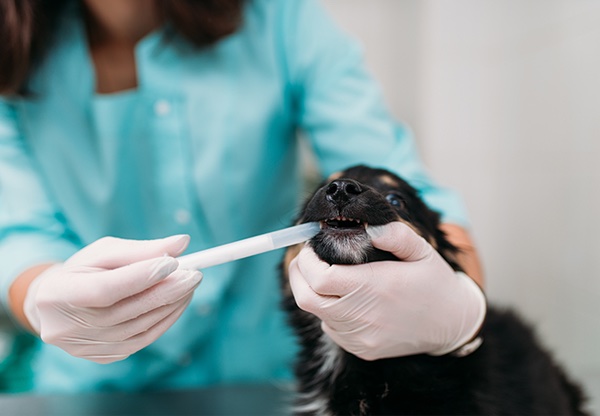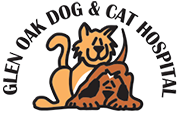
4 Ways Cat and Dog Gum Disease Can Affect Your Pet’s Long-Term Health
Gum disease in cats and dogs is much more than a cosmetic issue. Dental problems can lead to a number of health issues that affect many of your pet’s organs and their overall quality of life. Cat and dog gum disease is surprisingly common.
In a recent PetMD article, Dr. Ashley Rossman, DVM helped identify four health issues caused by gum disease in pets that can be prevented with proper oral care:
1. Poor Appetite
Gum disease in cats and dogs leads to oral pain and infections, which can lead to your pet having a poor appetite.
According to Dr. Ashley Rossman, DVM, co-owner of Glen Oak Dog & Cat Hospital in Glenview, Illinois, the bacteria from periodontal disease can cause your pet to have difficulty eating or have a decreased appetite. It might even stop her from eating altogether.
2. Liver Function
Decreased liver function is another long-term effect of gum disease.
“Liver enzymes can rise in correlation to periodontal disease. This appears to be due to inflammation caused when the liver filters blood that has a large bacterial burden,” says Dr. Rossman.
3. Kidney Problems
The kidneys can also be affected. The kidneys act as filters in the body and have to clear out all of the bacteria from periodontal disease, which may lead to kidney damage. “This can cause a decrease in renal function,” says Dr. Rossman.
4. Bone Loss
Bone loss in the jaw is also common. “Periodontal disease can cause loss of teeth as well as bone loss and deterioration of the jaw,” says Dr. Rossman.
Jaw fractures may even occur in dogs and cats with periodontal disease.
How to Prevent Gum Disease
Although gum disease in pets is common, it can be prevented with proper dog dental care and cat dental care.
The first step in the prevention of gum disease in dogs and cats is brushing your pet’s teeth. “It’s the [most] effective method to help with prevention,” says Dr. Rossman. She recommends using a pet-friendly cat or dog toothpaste.
Brushing daily with a dog toothbrush or cat toothbrush is ideal. As for how to brush, “The area between the gum and the tooth is the most important area to target,” she says. Pet toothbrushes you can put on your finger can be very helpful in getting into the nooks and crannies in your pet’s mouth.
Dr. Liff also recommends water additives that work enzymatically to help prevent tartar accumulation. However, brushing your pet’s teeth is preferable, if your pet will tolerate it.
There are also a variety of dog dental chews and cat dental treats, such as Greenies grain-free dental dog treats and Greenies feline dental cat treats, that help prevent dental disease. These shouldn’t be used as substitutes for regular brushing but should be considered additional methods of prevention.
No matter which products you choose to use, Dr. Rossman warns to check the label. “Pet parents should only use products that have the Veterinary Oral Health Council, or VOHC, seal of approval.” She also recommends checking with your veterinarian before starting your pet on a new product.
The next line of defense against gum disease is a thorough professional cleaning, which is safest and most effective when performed under anesthesia. “Not every pet requires yearly cleanings,” says Dr. Liff, “but many need one at least every other year.”
Your veterinarian can determine when your pet needs a professional dental cleaning. That being said, it’s always best to focus on preventative care—rather than reactive care—when it comes to your pet’s dental health.
The original full article can be read here:
https://www.petmd.com/dog/care/4-ways-cat-and-dog-gum-disease-can-affect-your-pets-long-term-health
